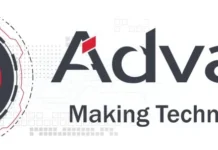Authored by Palak Dengla, Chief Physiotherapist, Aster RV Hospital
Being a Physiotherapist, I often encounter the term Spinal traction aimed at alleviating pain and to increase mobility at a particular joint. Traction in simple words is decompression or distraction of two joints. It is an artificial therapeutic way of enhancing joint space to assist tissue growth and healing. Spinal Traction is used to increase inter vertebral disc space post prolapse/slipped disc, or in case of a severe muscle spasm as part of acute management of pain.
What are the different types of spinal traction?
Manual traction given with the help of hand whereas a Mechanical traction using a traction table and the traction unit. Mechanical traction is calibrated precisely according to the patient’s weight. It is a delivery of specific traction force, in a specific angle and for a particular duration, unlike a manual traction which is more humanly controlled and is subjective in nature.
How does traction help reduce the pain along the spine?
Traction decompresses the spine and enhances the space between the two surfaces. Pain is generally associated with a pinch on any kind of sensory/afferent nerve in our body. Once the pressure/pinch is removed over the nerve, it can be made pain free. A conservative/non-surgical approach to ease the neural pinch is achieved by spinal traction.
ALSO READ: Appendix Health and Diet: Foods for A Healthy Appendix
What are the benefits of spine traction?
Tractions aids in healing of the tissues and the intervertebral discs by promoting rehydration and healing the degenerated discs. It helps to increase the Range of motion to maintain good flexibility and mobility to combat muscle stiffness and pain. It assists overall muscle relaxation.
Are there any side effects and disadvantages of spine traction therapy?
Traction is a modality of choice. We need to make a wise decision while prescribing a treatment plan for our patients. A thorough assessment by a Qualified Physiotherapist considering the Red Flags must be done. Patients with Cancer, Ligament instability, extreme muscular weakness, neurological conditions, vascular insufficient, osteoporosis are supposed to be refrained from undergoing traction therapy.
What are the types of pain that can be treated with spine traction therapy?
It can be performed manually or mechanically. I generally practice, both, manual and mechanical spinal traction. I use Mulligan Spinal traction Concept wherein I use the Mulligan Belt. It gives immediate relief to the patient in single session. Mechanica traction table is also extremely effective in case of neck or low back pain. Spinal traction is Commonly used to treat herniated discs/slipped discs, sciatica, arthritis of spine, spinal stenosis, radiculopathy, and many other back conditions.
This year educate yourself and develop your career with EasyShiksha








































































